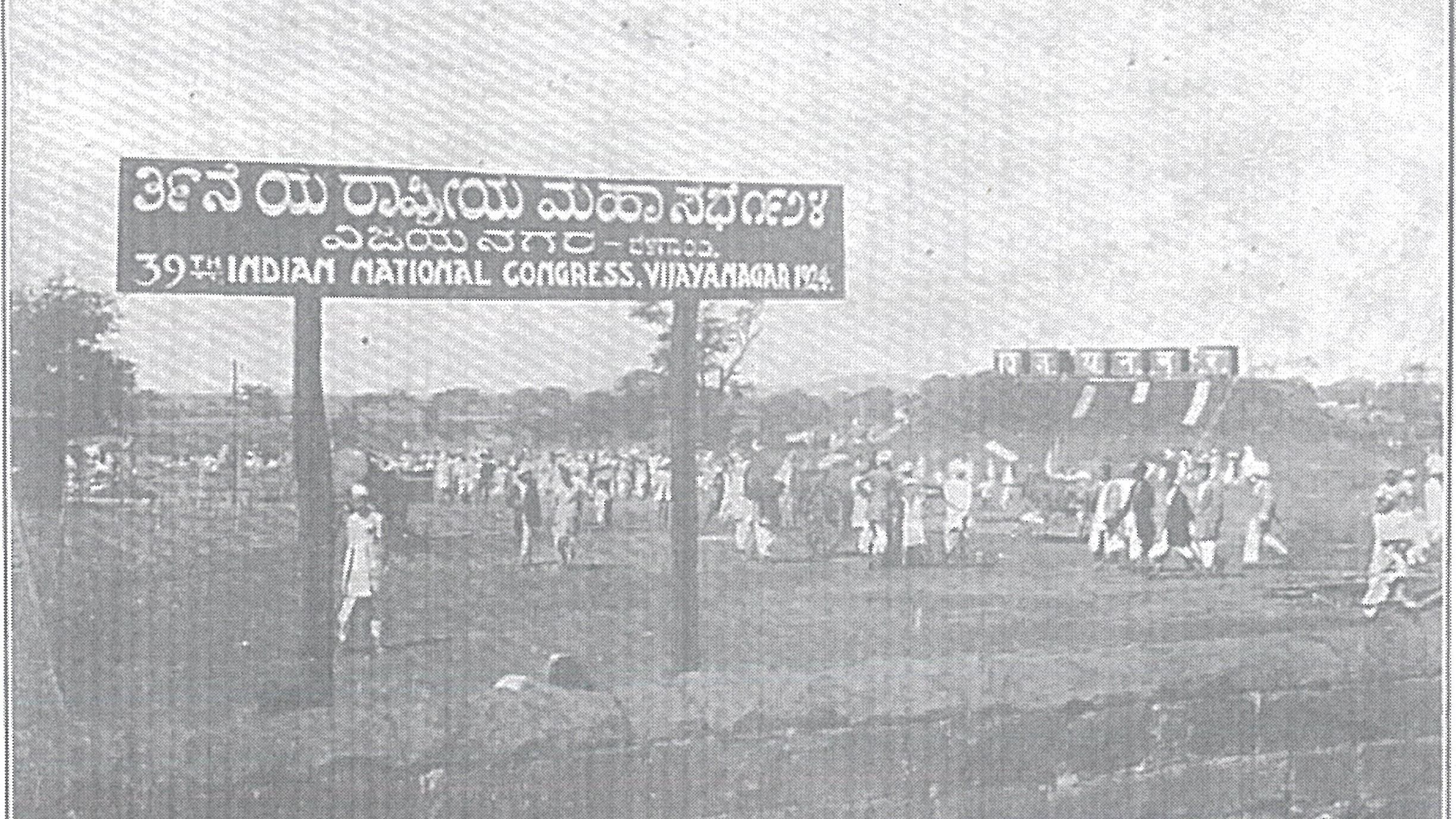
Stills from the 39th Annual Session of the Indian National Congress, held in Belgaum in 1924.
Credit: KPCC
The Indian National Congress (INC) was formed in 1885. As the years passed, it took the form of a political party. Since then, the INC met at the end of every year to deliberate at different places. These deliberations came to be called annual sessions.
The 39th annual session of the Indian National Congress was held at Belgaum (now Belagavi) on December 26 and 27, 1924. It was the first session to be held in the Kannada-speaking region. Hence, the responsibility of organising it fell on the Karnataka Provincial Congress Committee (KPCC), which had been formed in 1921.
Leading up to the session, the KPCC met in March 1924 to select a suitable place to convene the session. After a very close contest, Belgaum was chosen, considering the facilities available to accommodate a large gathering. It was an important railway hub and centre of commercial activity. Interestingly, the 16th Bombay Provincial Conference was also held here in 1916. It was during this conference that Bal Gangadhar Tilak founded the Indian Home Rule League.
In preparation, the KPCC met in August 1924 to finalise the sub-committees, its members and various office bearers. It also formed an Executive Committee to coordinate the work. In all, there were 16 sub-committees.
A wide empty space was chosen as the venue, it spanned an area of about 82 acres. It was named ‘Vijayanagara’, after the Vijayanagara empire. A huge khaddar tent, which was used in the previous Kakinada session, was hired and decorated. Life-size portraits of leaders of national fame were procured for exhibition. A garden with a marble fountain was erected in front of the pandal.
Facilities were provided to accommodate delegates and members. A central kitchen was arranged, along with separate kitchens and a central store. A hall to exhibit Swadeshi products was also erected.
Session begins
Mahatma Gandhi arrived on December 20, 1924. Interestingly, the railway station he came to was also named Vijayanagara. The session commenced at 3.00 pm on Friday, the 26th. The session began with the singing of Vande Mataram, followed by two welcome songs in Kannada. Gangadhar Rao Balakrishna Deshpande, the chairman of the Reception Committee welcomed the delegates in a short speech in Kannada, and requested Gandhi to take chair.
In his speech, Gandhi highlighted Hindu-Muslim unity, the boycott of foreign goods and spoke against untouchability. He also gave a clarion call to support national education. After the speech, resolutions were read, clarified and accepted. Speeches to support the resolutions were made in English, Hindi and Kannada too.
Stills from the 39th Annual Session of the Indian National Congress held in Belgaum in 1924.
Credit: KPCC
On the second day, ‘Udayavagali Namma Cheluva Kannada Naadu’, composed by Huilgol Narayana Sharma was sung. After this, it was time for resolutions again. Speeches were made, and clarifications were provided. A resolution regarding the next session was passed.
Gandhi delivered his concluding address, showering praises on those who worked hard to make the session a success. He emphasised the service rendered by young volunteers who had come from different regions. Pandit Motilal Nehru proposed the vote of thanks. With this, the historic session of the Indian National Congress held at Belgaum came to a conclusion.
The Reception Committee was comprised of members from Kannada-speaking regions. Some of them also worked as secretaries in subcommittees. The session being held here helped mobilise more leaders and proactive participants in the freedom movement from Kannada-speaking regions.